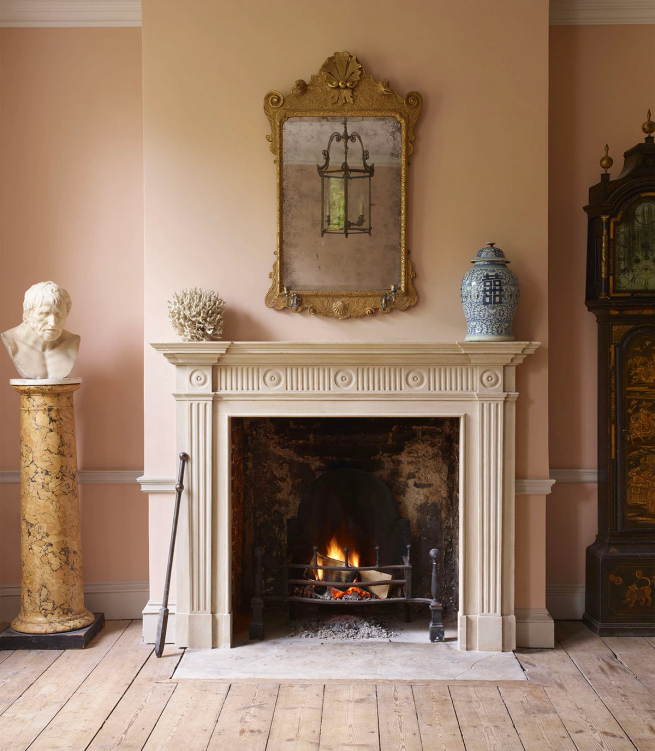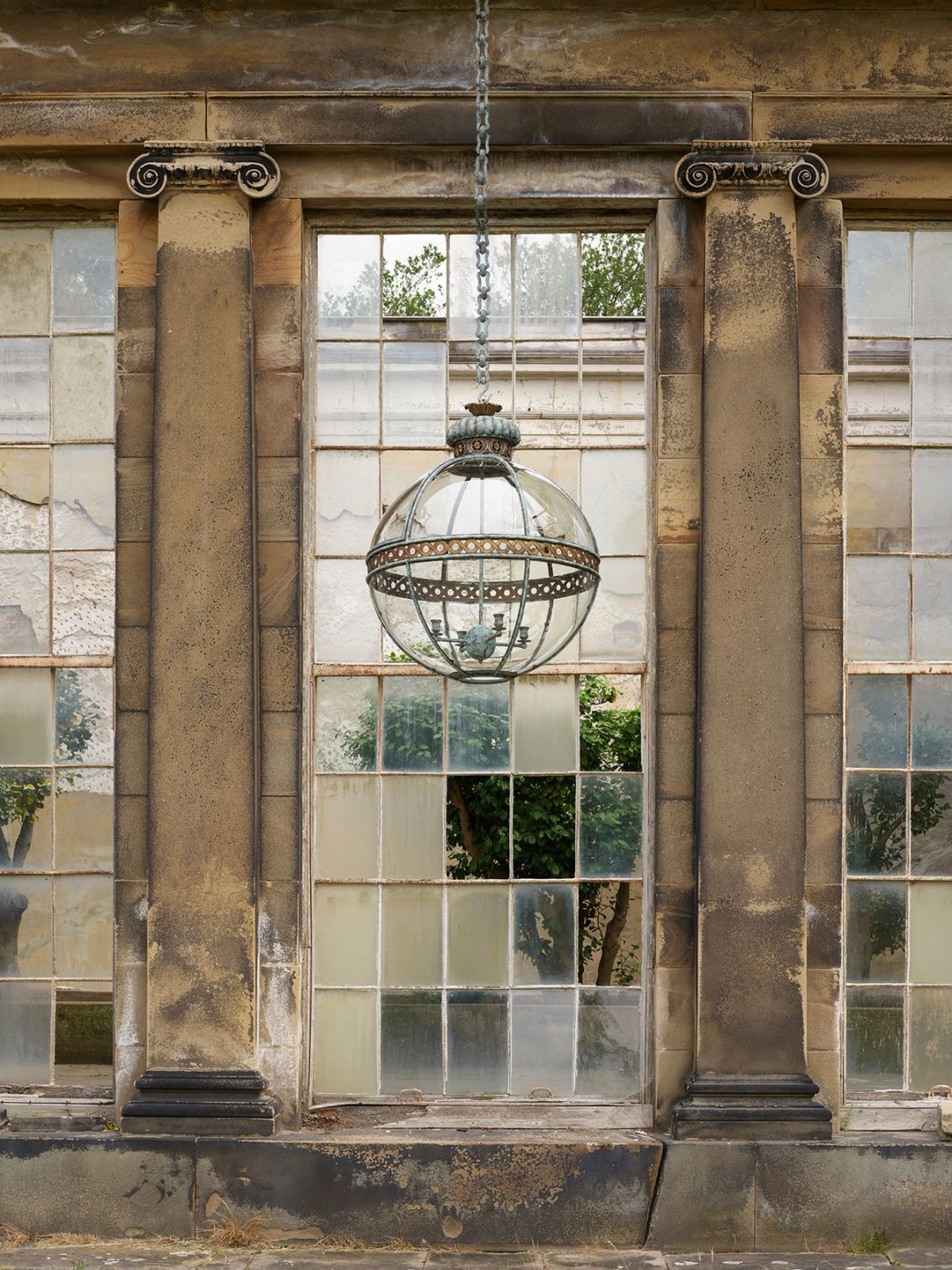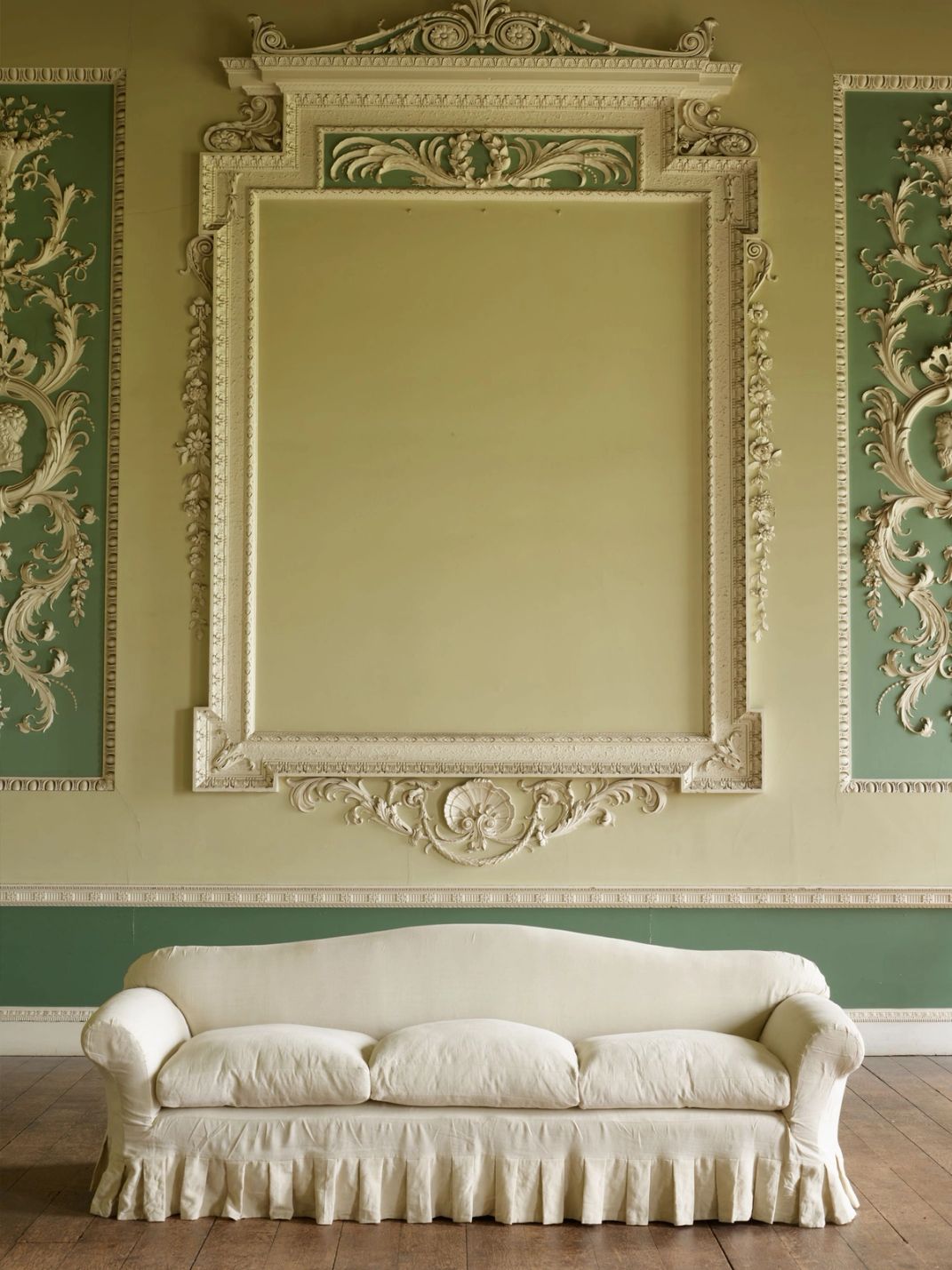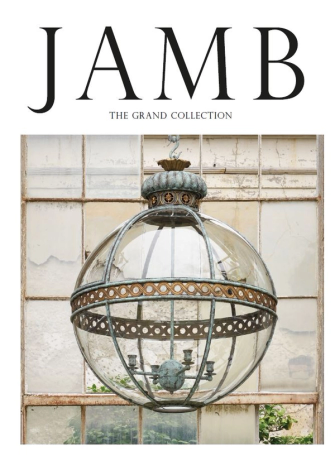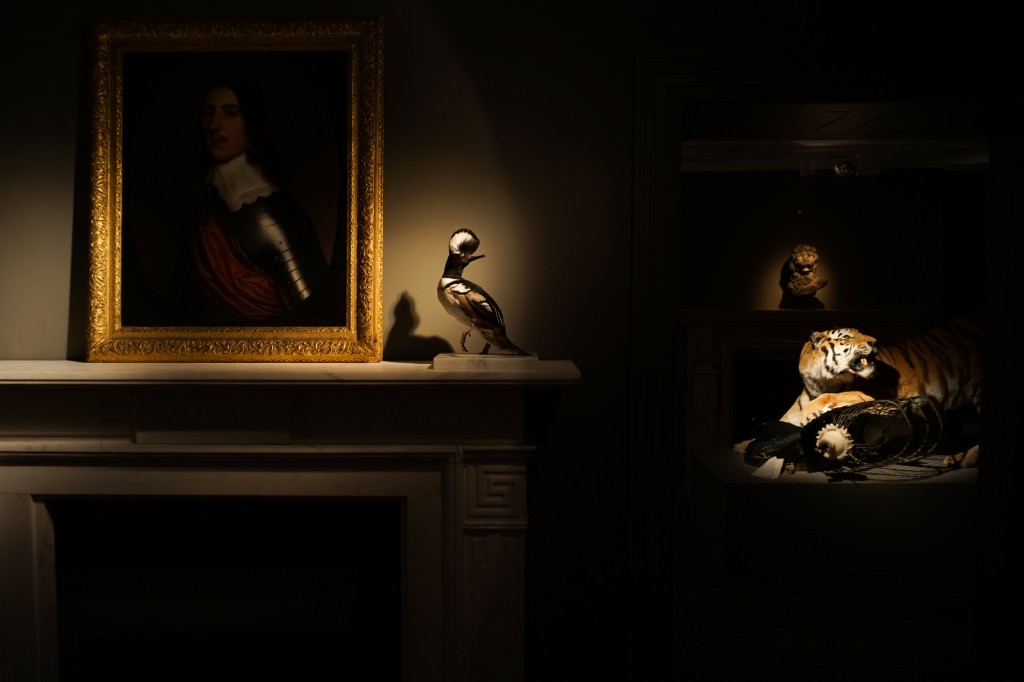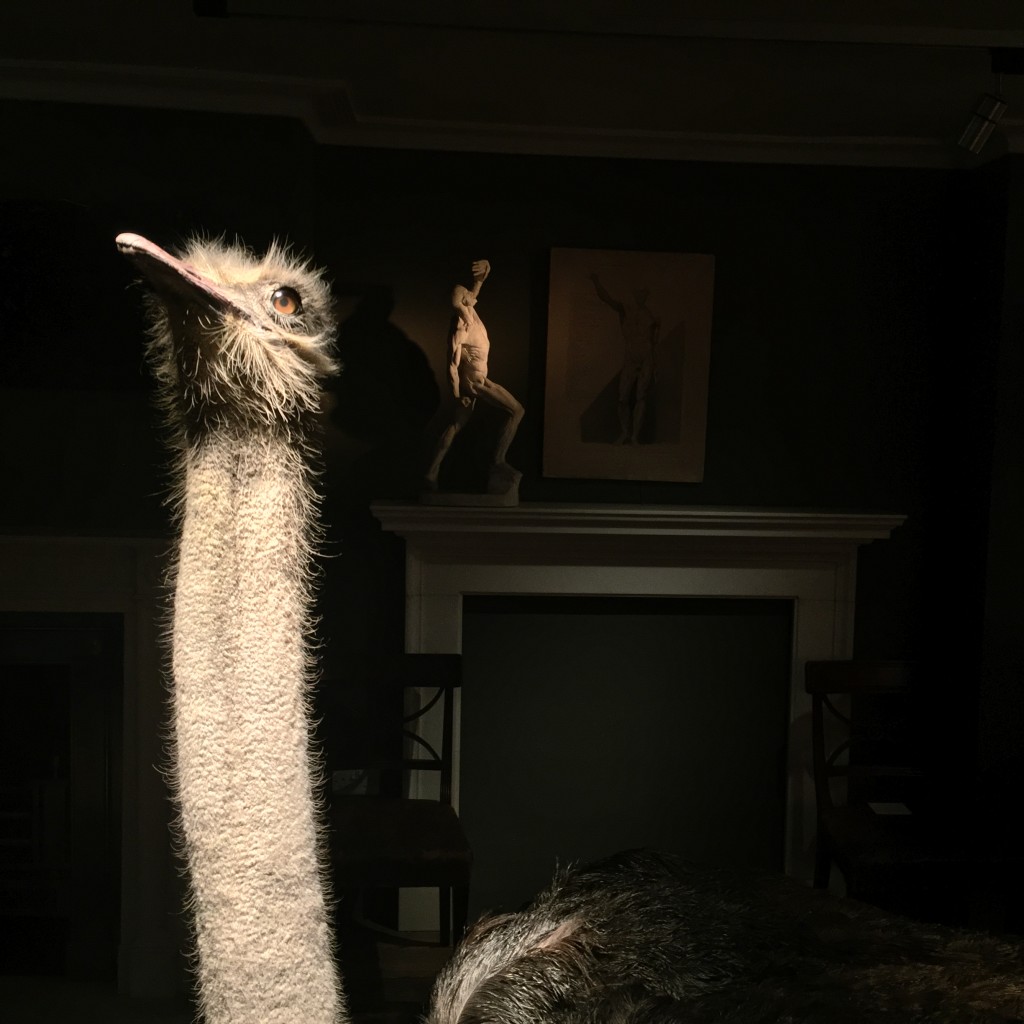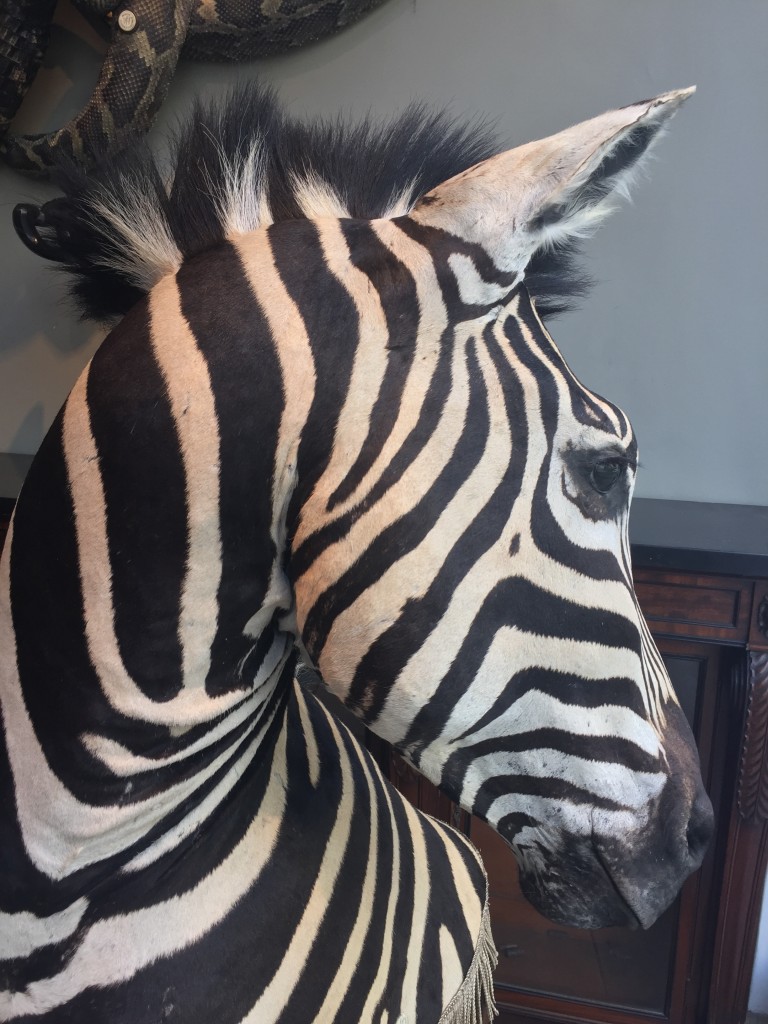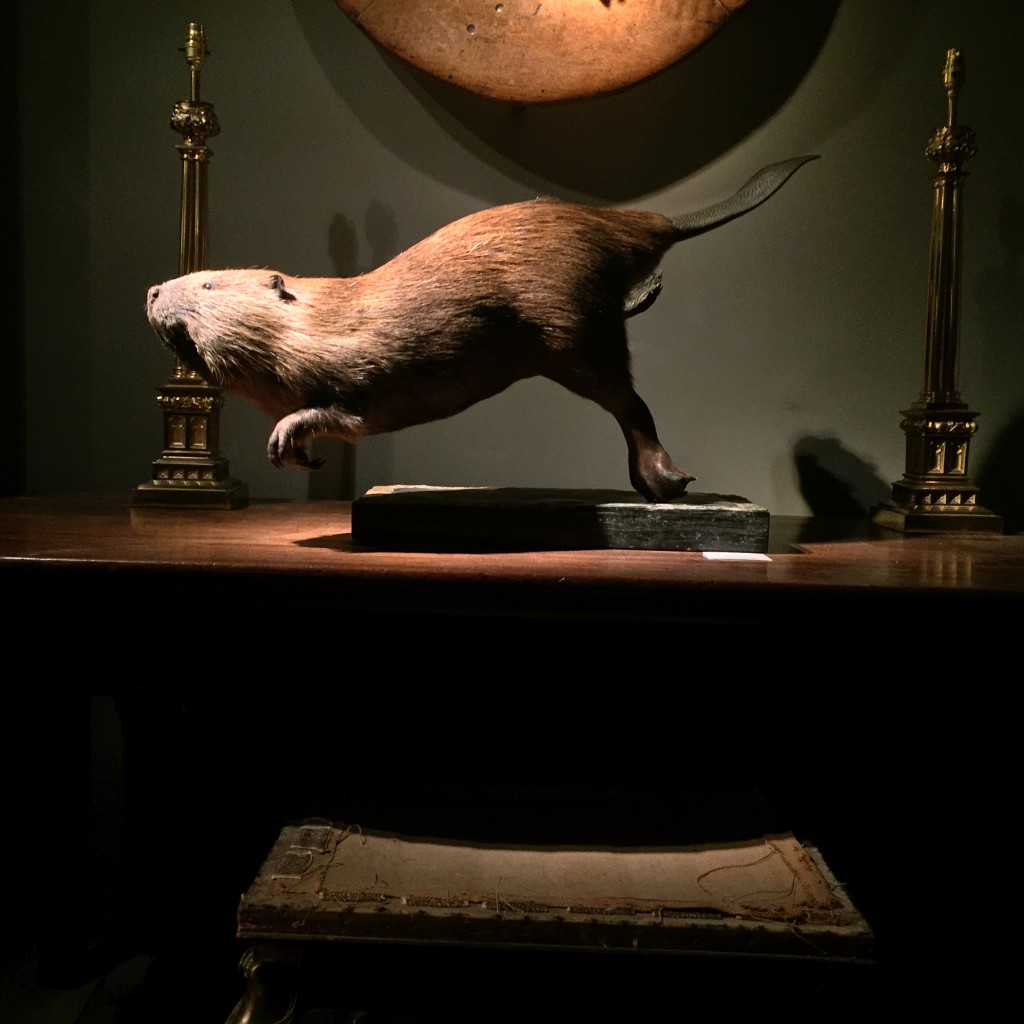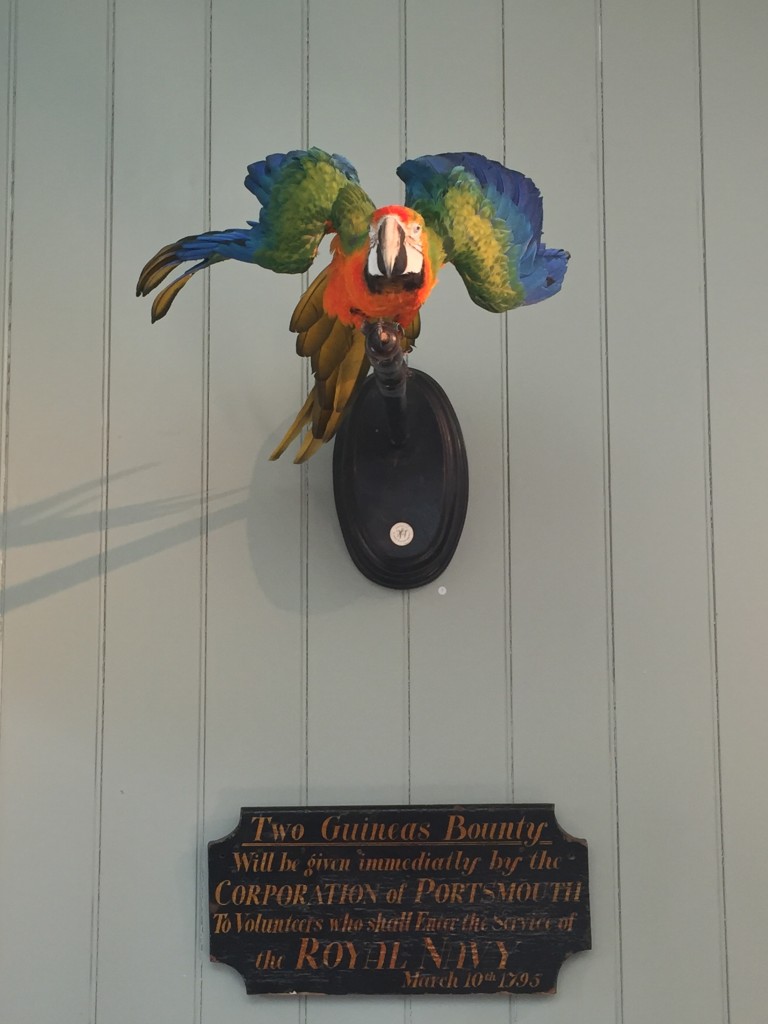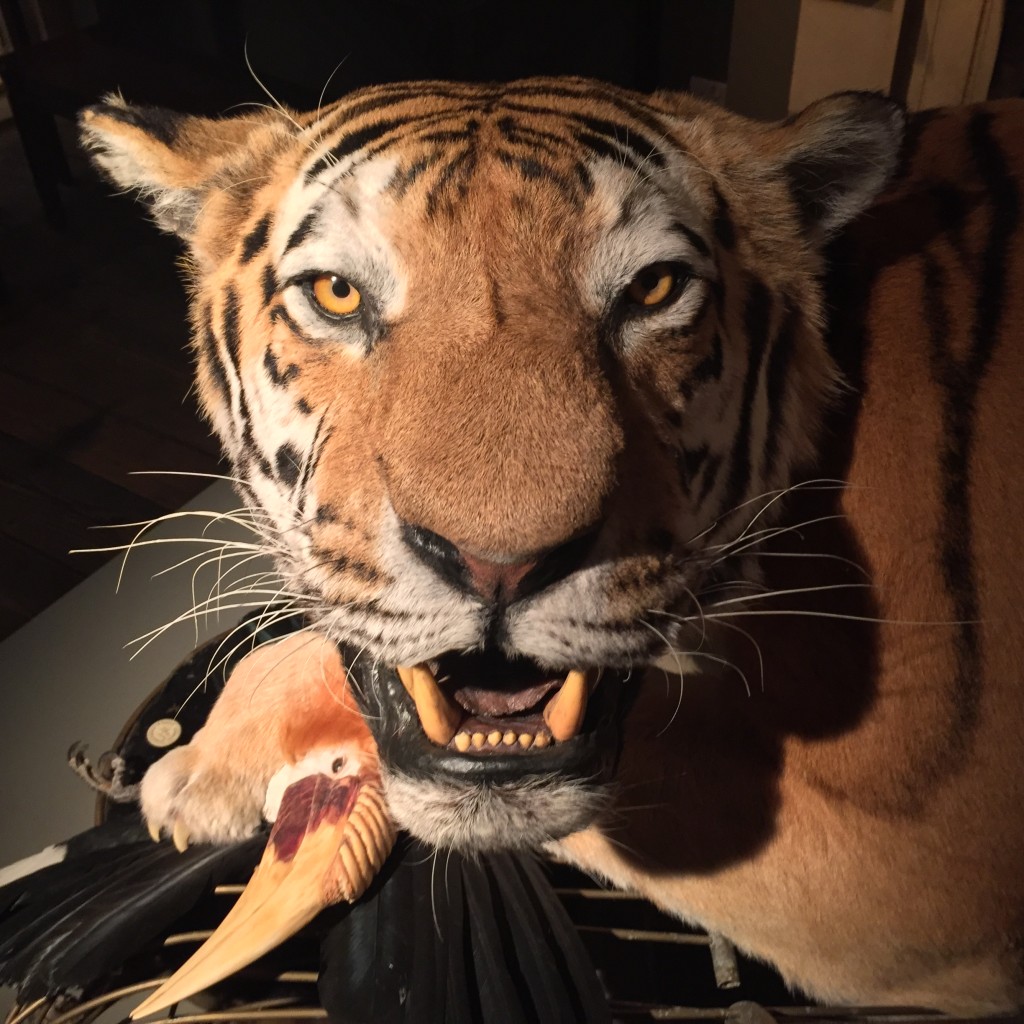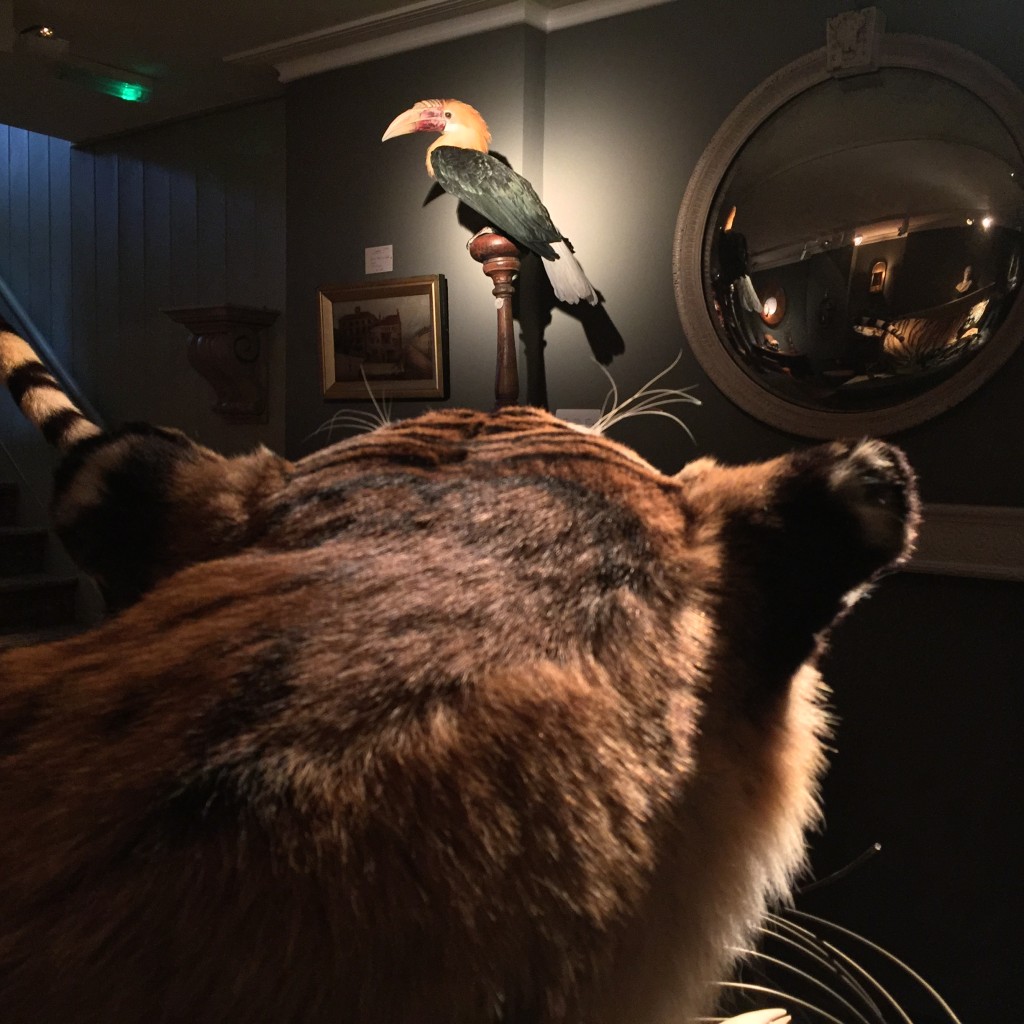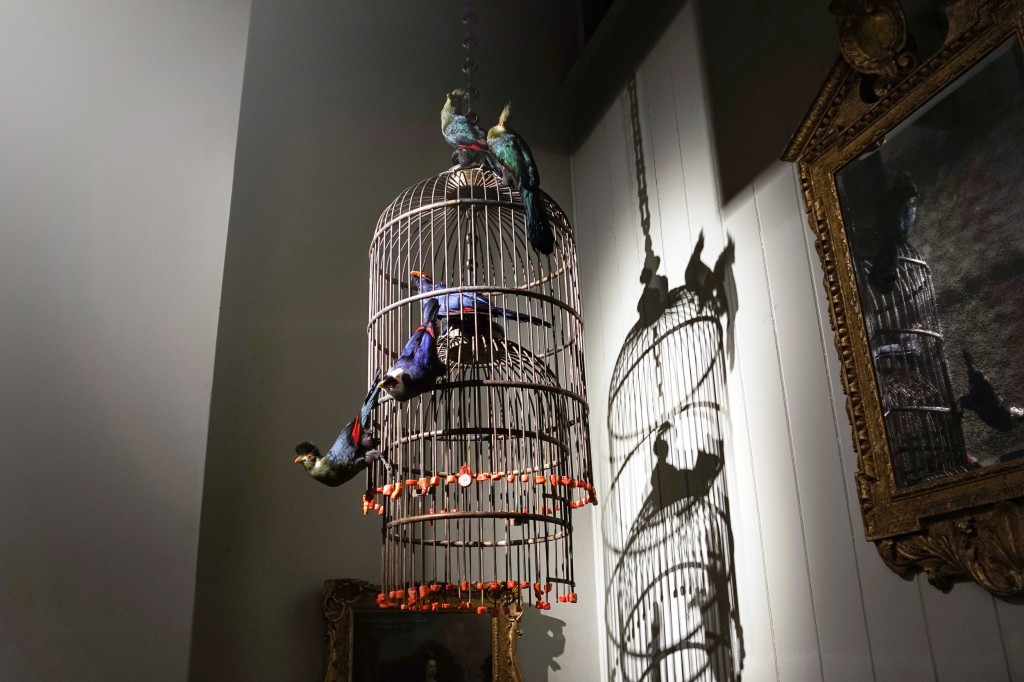It has taken over two years to create and this week at Jamb we were thrilled to unveil the second fine taxidermy exhibition of the work of Darwin, Sinke & Van Tongeren.
We threw a party to celebrate the spectacular new show on Tuesday night, the Pimlico Road evening and eve of Masterpiece, acknowledging taxidermy at it’s finest.
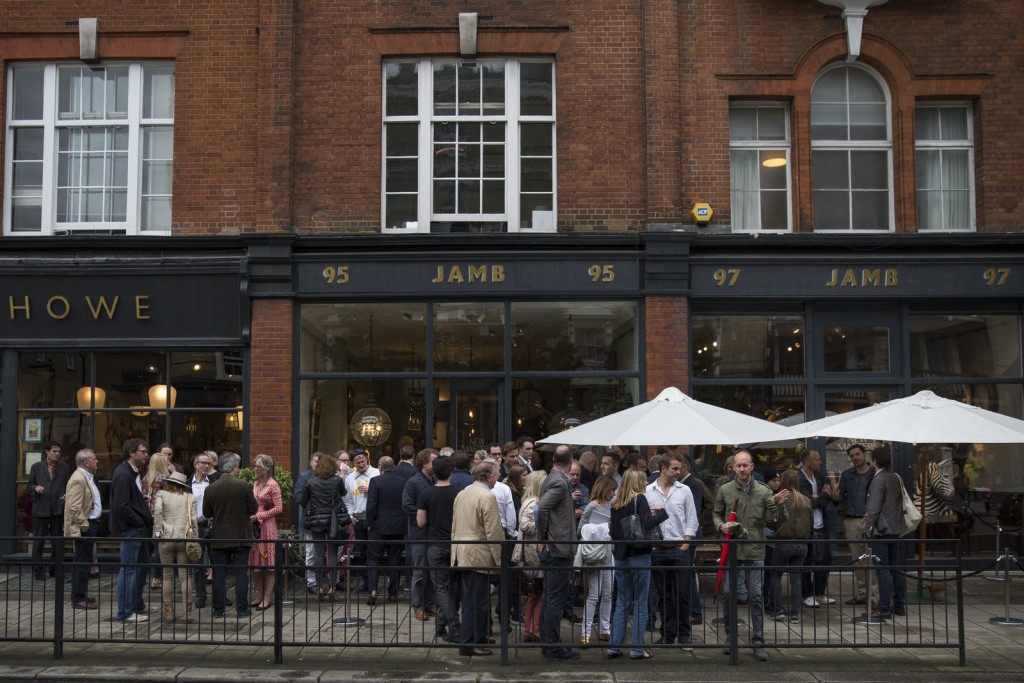
The champagne and canapés flowed alongside the music. There was a wonderful buzz in the air and the showroom was packed, spilling out onto the Pimlico road. By the end of the evening a quarter of the show had sold.
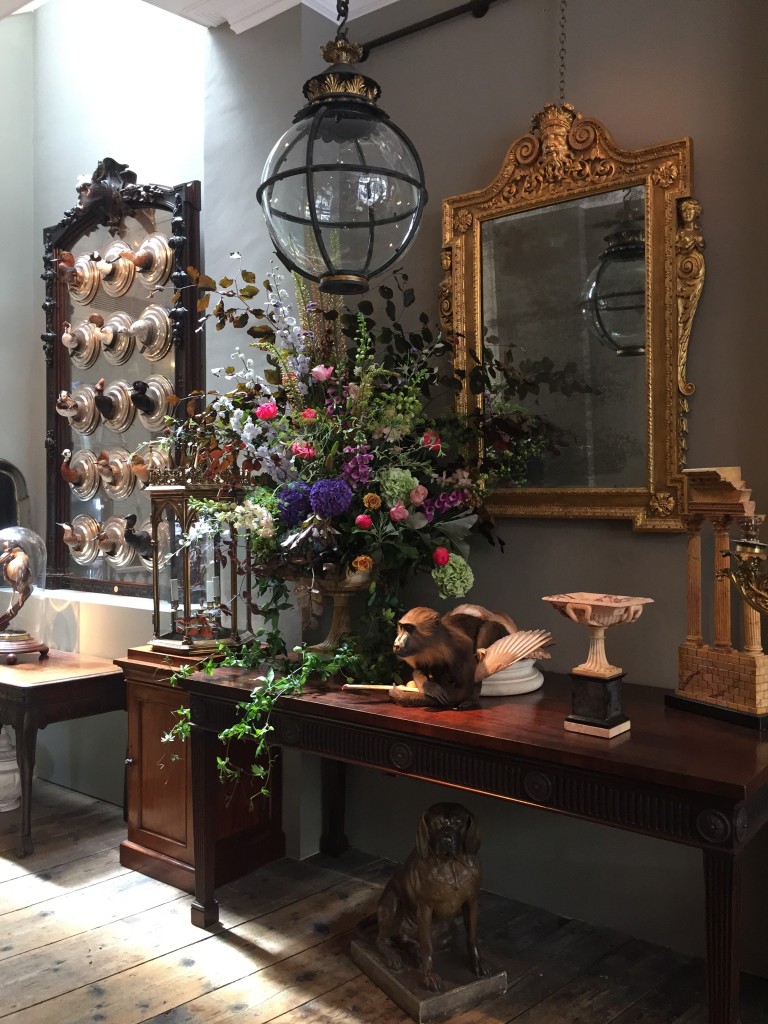
A very rare female Mandrill sits next to the floral display with a great collection of duck ‘shouldermounts’ on silver shields decorating an antique french hunting mirror to it’s right.
Not only taxidermists – they are artists. Not only sculptors – they are storytellers. Darwin, Sinke & van Tongeren are conservationists that highlight the rarity of the finest of nature’s creations.
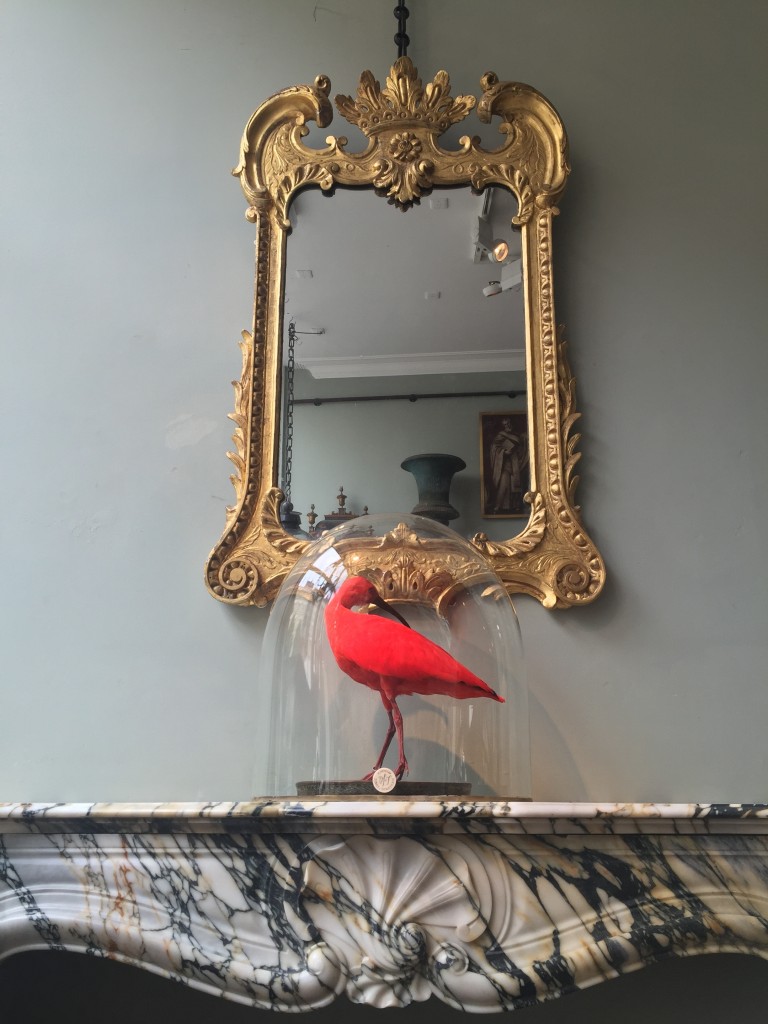
The Scarlet Ibis is an extremely rare exhibit amongst many others, capturing the bird at a time which only lasts for roughly five weeks of the year. During this time, the beak turns from a lighter yellow to black, and the plumage transforms into a vibrant scarlet. It is encased in a glass dome, with the bird resting on a solid base trimmed with snakeskin.
Extraordinary skill, patience, determination and passion lies in the heart of each work of art. There are almost forty pieces in their collection ‘New Masters’ and some of the works have taken a year to create from concept to finality.

The hardest piece for them to part with: A Burmese Python wrestling a Curvier’s Cayman. The python came from a venom centre and is four metres long. A truly unique exhibit.
Sinke and Ferry van Tongeren are 21st century artists using a foundation of 17th century taxidermy techniques. Then each piece has a hand built mould created, incorporating iron wiring, clay and wood. From the 19th century onwards most taxidermists used factory moulds.
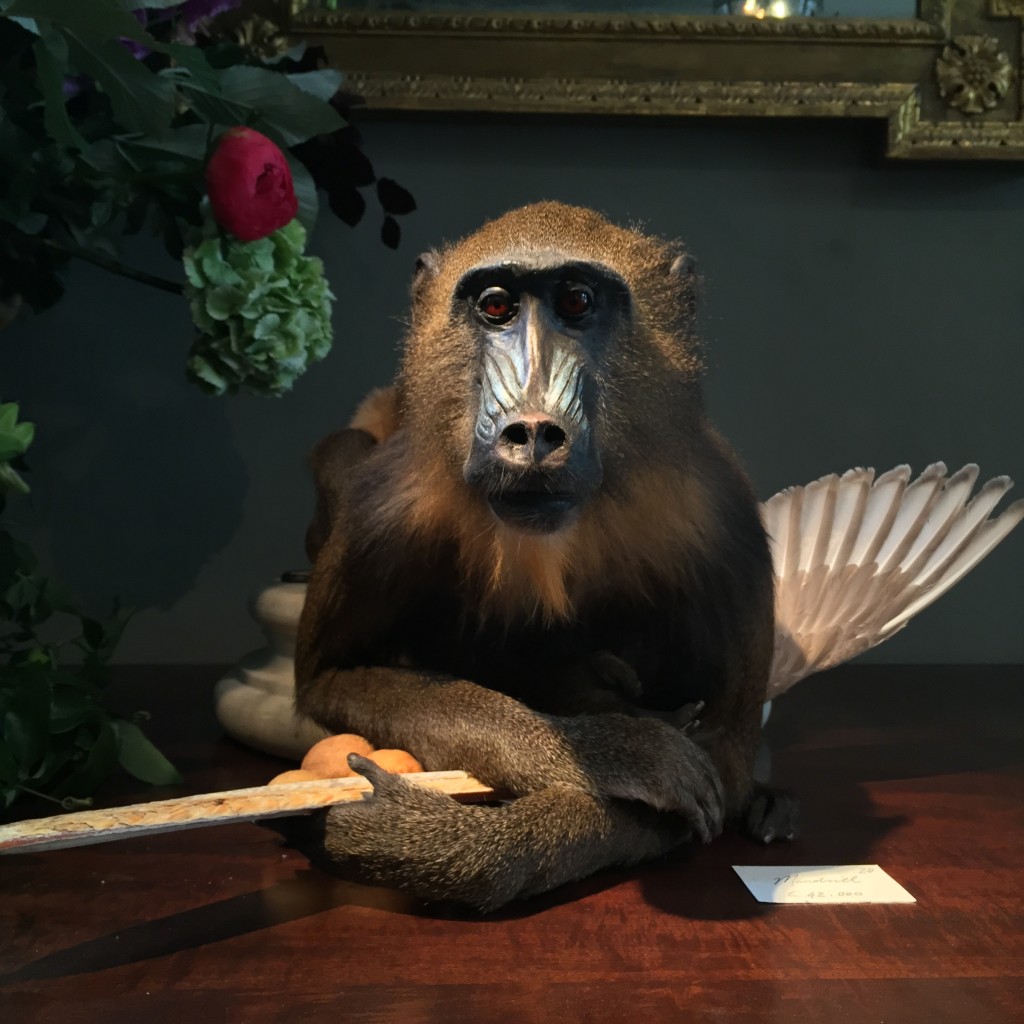
A female Mandrill. A very rare and exclusive animal to legally own. In this classical composition the monkey is sitting on a marble plinth with different natural accessories including a goose wing, a Pelican beak and Tinder Fungus.
They have created immortal second lives, preserving the rarest of animals and birds for countless generations to come. The fact is that every year the thousands of animals and birds from zoos, animal sanctuaries and breeders, that die from natural causes, are discarded.
Following their passion for true art, it is important to recognise that the artists only work with animals and birds that have died from natural causes and all pieces are microchipped and comes with its own documentation. The artists have built up their close contacts around the world, over many years.
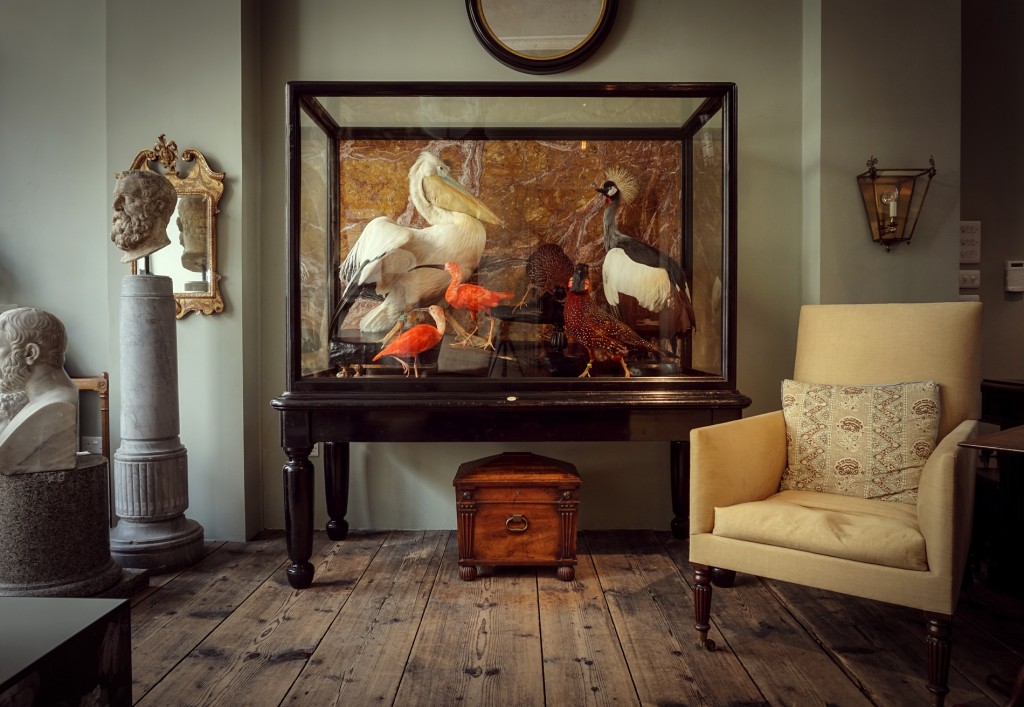
Tableaux h’Hondecoeter. An antique display case inspired by the famous bird/park paintings of d’Hondecoeter. The composition shows a White pelican, Grey Crowned Crane, two different species of Tragopans and a couple of Scarlet Ibisses.
Their inspiration stems from the great Dutch painters Jan Weenix, Melchior d’Hondecoeter and Adriaen van Olen who portrayed the wonder of the new discoveries of exotic animals that were brought back to Europe by anthropologists and explorers during the 17th century.
Their work is derived from the deep knowledge and understanding of the behaviour and personalities of animals and birds that live in their natural habitat which enables each piece to remain as lifelike as possible. Reflecting their deep respect and wonder for nature itself.
Each composition is worked out by creating numerous sketches. With each piece of fine taxidermy the composition is absolutely integral to the story they create. Their art is of the finest craftsmanship with no piece ever holding the same pose.
Arguably, the most striking and arresting piece in the show is a Siberian Tiger with two Hornbill birds.
There are only five hundred Siberian Tigers left in the wild and the message couldn’t be more poignant. The artists feel extremely privileged that they got the opportunity to create this challenging piece with one of the finest, most beautiful and largest rare animals.This specific animal came from a Dutch Zoo where he was part of a breeding program but died from natural causes.
The story that has been created here is that the tiger has broken into a cage holding a pair of hornbills. The male Hornbill, it’s wings splayed has been captured, held underneath the tiger’s magnificent paw. It’s body twists round and sets it’s eyes on the one that got away – the female hornbill. Hornbills mate for life and this depiction could be perceived as an ultimate love story, with the male counterpart having sacrificing himself for his mate.
One of my favourite pieces is a family of Turaco birds that have broken free from two antique cages with coral stone. The Turaco is the artists favourite bird. Each bird is totally unique and are not only natural works of art but display elegant, humorous and gregarious characters.
We are extremely proud to collaborate with Darwin, Sinke & van Tongeren again. The beauty and magic of their art provides so much serenity and natural wonder and is a welcome respite from the political unrest we find ourselves in.


